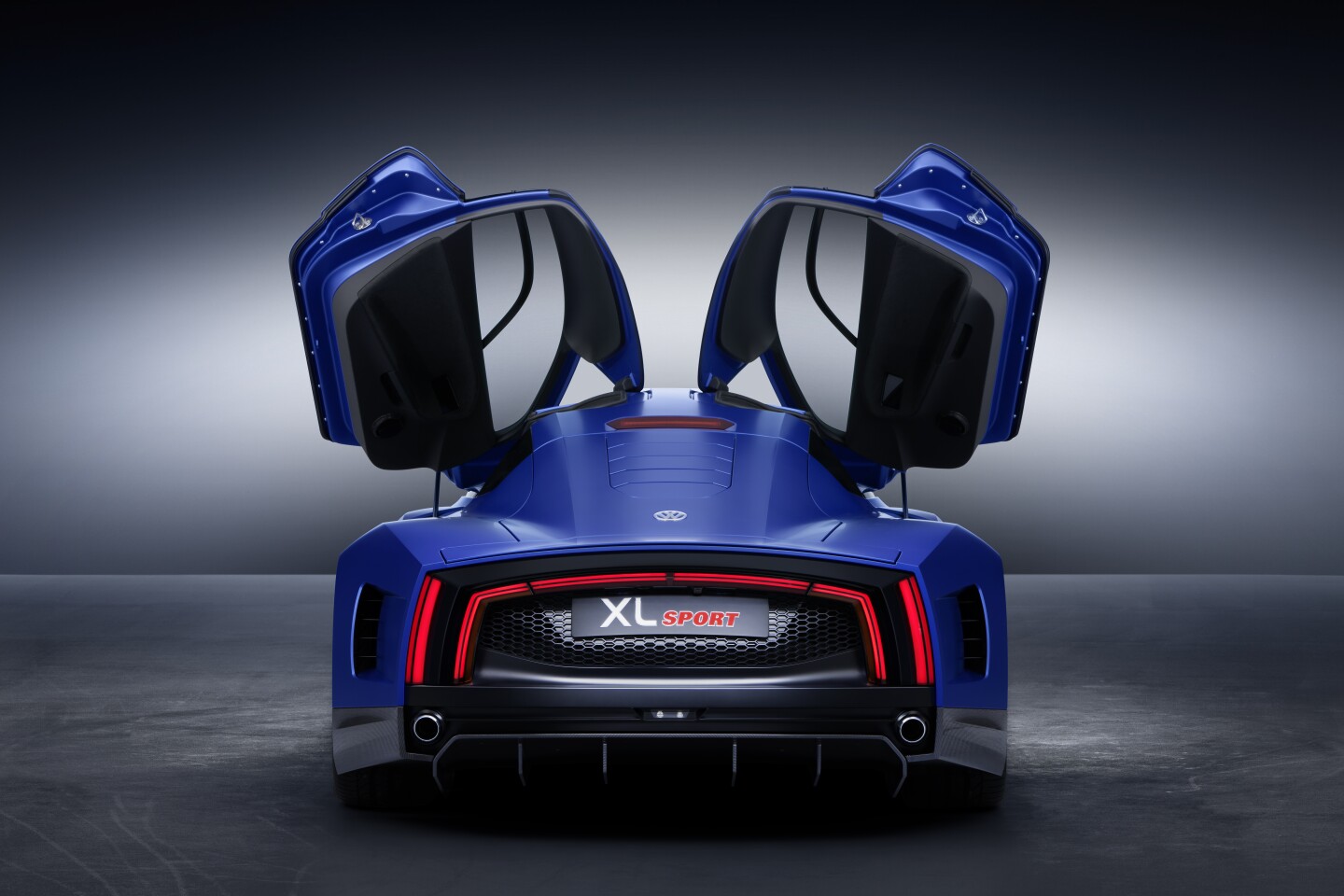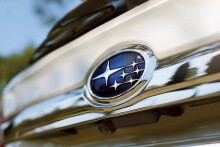Volkswagen's XL1 is a fascinating study in fuel economy. The combination of its low-drag shape, light weight and plug-in hybrid system allow it to sip fuel at just 0.9 l/100km (261 mpg), but a 0-100 km/h (62 mph) time of 11.9 seconds isn't what you'd call lightning quick. To rectify this VW has given the XL1 a sports makeover, with the help of a Ducati engine.
The XL Sport is powered by the two-cylinder, V-twin engine from a Ducati 1199 Superleggera, which is redlines at a screaming 11,000 rpm and allows a 0-100 km/h (62 mph) sprint time of 5.7 seconds on the run up to 168 mph (270 km/h). On its way to the title of "world's most powerful two-cylinder engine," the "Superquadro" motor takes advantage of titanium connecting rods and a short crankshaft to allow high engine speeds.

A step down transmission reduces engine speeds by a factor of 1.86 before sending power to the rear wheels through a seven-speed DSG gearbox.
VW's focus on aerodynamics has carried over from the XL1, and the XL Sport's 0.258 drag coefficient is just as crucial to the car's lofty top speed as the engine's 147 kW (197 hp) and 133 Nm (98 lb.ft) of power. Up front there are special vanes directing air into specific channels on the XL, an underbody "optimized" for smooth airflow and lift-reducing ducts in the bonnet, which are supplemented by a retractable rear spoiler.
Supporting the XL Sport's exotic powerplant is a chassis that Volkswagen claims is well within the racing realm. The company has used high-strength steel in the car's subframes as it provides a strong, lightweight base for the XL's pullrod-actuated front dampers and pushrod-actuated rear control arms, while 18-inch forged magnesium-alloy wheels save 24 kg (53 lb) over a conventional wheelset. Tires measure 205/40 up front, and 265/35 at the rear.

In the transition from hypermiling eco car to Ducati-powered sportster, the XL1's body has undergone some significant changes. The extensive use of carbon fiber reinforced plastic (CFRP) has carried over from the XL1's construction, and is used in the car's central monocoque and bodyshell. The XL1's dramatic "wing doors," slimline "e-mirrors" and staggered seating position also carry over.
Changes begin with the XL Sport's wider and longer body. The car's 168.9 in (4,290 mm) bodyshell is 15.8 inches (401 mm) longer than that on the XL1, and it has grown in width by 7.2 in (183 mm) to 72.7 in (1,847 mm). Wheelbase has also grown to 95.4 in (2,423 mm), up from 87.6 (2,225 mm).

On the styling front, the XL Sport eschews the XL1's tapered tail for a squarer shape that VW claims more closely mirrors that of a classic sports car. Up front, horizontal lines echo the styling language of the rest of Volkswagen range, while the XL1's LED daytime running lights also make an appearance.
Broad shoulders at the back are highlighted by the LED ribbon taillights. The smooth, coupe bodyshape that flows into the tail is uninterrupted, except for when the Ducati engine at the rear needs extra air, at which point 5 louvres will open up to facilitate free breathing.
The XL Sport's designers have also worked to provide classy touches throughout the car's interior. The digital instrument cluster incorporates a lap timer and oil pressure monitor, and the car's red-stitched steering wheel hides aluminum shift paddles for the 7-speed DSG.
The XL Sport is making its debut at the Paris Motor Show.
Source: Volkswagen




















